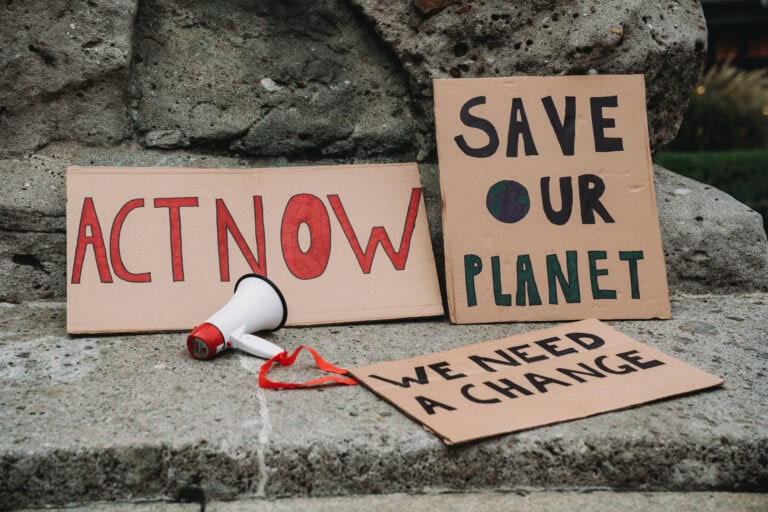Beyond the building: reducing embodied carbon through innovative master planning

While industry and policy has taken great strides in recent years to address the carbon impact of buildings, the embodied carbon from masterplan works, which can span many years and consume large amounts of materials, is comparatively under-researched, despite the potential to deliver significant carbon savings.
UKGBC’s new report
In February this year, UKGBC sought to address this in its publication Building the Case for Net Zero: A case study for low carbon residential developments.
The study looked at Grosvenor’s potential plans to extend its existing scheme at Trumpington Meadows, in south west Cambridgeshire. The 750-home extension masterplan was used to look at design interventions that would reduce embodied carbon, whilst improving the liveability of the development.
Setting the baseline
To model this, an embodied carbon assessment of Trumpington South’s current masterplan and design was undertaken to understand its total carbon impact.
By breaking down the masterplan elements such as roads, infrastructure, hard surfaces, utilities, and the heat network it was possible to establish a baseline embodied carbon for the entire masterplan of 3,300,000 kgCO2e, or the equivalent of 80 terrace houses.
Armed with the baseline data, a team of industry experts designed two increasingly ambitious scenarios for minimising the most dominant sources of carbon – the ‘intermediate’ and ‘stretch’ scenarios, comprising the most practical and feasible design changes that would be considered acceptable for today’s residential market and local design codes.
The findings
The findings were quite staggering, identifying that by implementing a range of easy wins and cost-effective design interventions, the stretch scenario would reduce the embodied carbon of the original masterplan by 20.3%, a total of 670,000 kgCO2e.
Significantly, this reduction was possible with a mere 0.6% uplift in capital costs and would lead to a sizeable increase in the green infrastructure on site, boosting health, wellbeing and liveability, all increasingly important drivers for consumers as we emerge from the pandemic.
The full report goes into much more detail but to pick out some key points:
- Improving our understanding of the baseline embodied carbon from the outset was key to identifying where interventions and design changes should be focussed, such as the ‘grey infrastructure’ – comprised of roads, parking areas and kerbs – which made up 88% of the baseline embodied carbon.
- This was reduced by 660,000 kgCO2e (or 20% of the total) under the stretch scenario, primarily by reducing parking area and switching from asphalt to permeable paving on tertiary roads.
- There is a wider societal debate to be had about private car use, but it is important to highlight that the reduction in private parking provision allowed the integration of more active travel routes and an increase in low carbon alternatives such as charging points for electric vehicles as well as greater levels of tree cover and soft landscaping, with minimal impact on costs.
- Highlighting the importance of selecting low carbon products and reducing materials used during design and construction, the baseline ‘upfront carbon’ (all construction-related emissions up until practical completion) made up 85% of total embodied carbon.
- In our scenarios, it was possible to reduce embodied carbon from the stormwater network by swapping in nature-based solutions, extending the swale network to include primary and secondary streets, reducing embodied carbon, boosting climate resilience and increasing the provision of ‘blue/green networks’.
Lessons learnt
- Measurement is the critical first step to understanding the size of the challenge for new developments, before implementing ‘quick wins’ to cut embodied carbon.
- With the rise of remote working and other lifestyle changes brought on by the Covid-19 pandemic, residents are spending more and more time in their local area, increasing their awareness of aspects of our environments which go beyond carbon itself.
- This customer-led demand, combined with a range of other value drivers – outside of capital cost – will help improve the feasibility of low carbon residential developments over time. This includes increasing appeal within the planning process and for potential new residents.
- This report moves our collective knowledge forward and should prompt developers, housebuilders, and Local Authorities to take a more holistic view to ensure developments are healthy and habitable for residents, within and beyond their property boundary.
More information
For more information on UKGBC’s Advancing Net Zero programme, please visit our dedicated webpage. If you have any questions, please contact ANZ@ukgbc.org.
Sign up to attend our next event that looks at the Masterplan report, specifically in the context of how it impact local authority policy makers. Find out more.
Related
A journey to carbon neutrality

28 UKGBC members sign up to the Net Zero Carbon Buildings Commitment tackling whole life carbon

3 key priorities for the UK built environment to help tackle the climate crisis

Action ramps up on net zero carbon buildings

